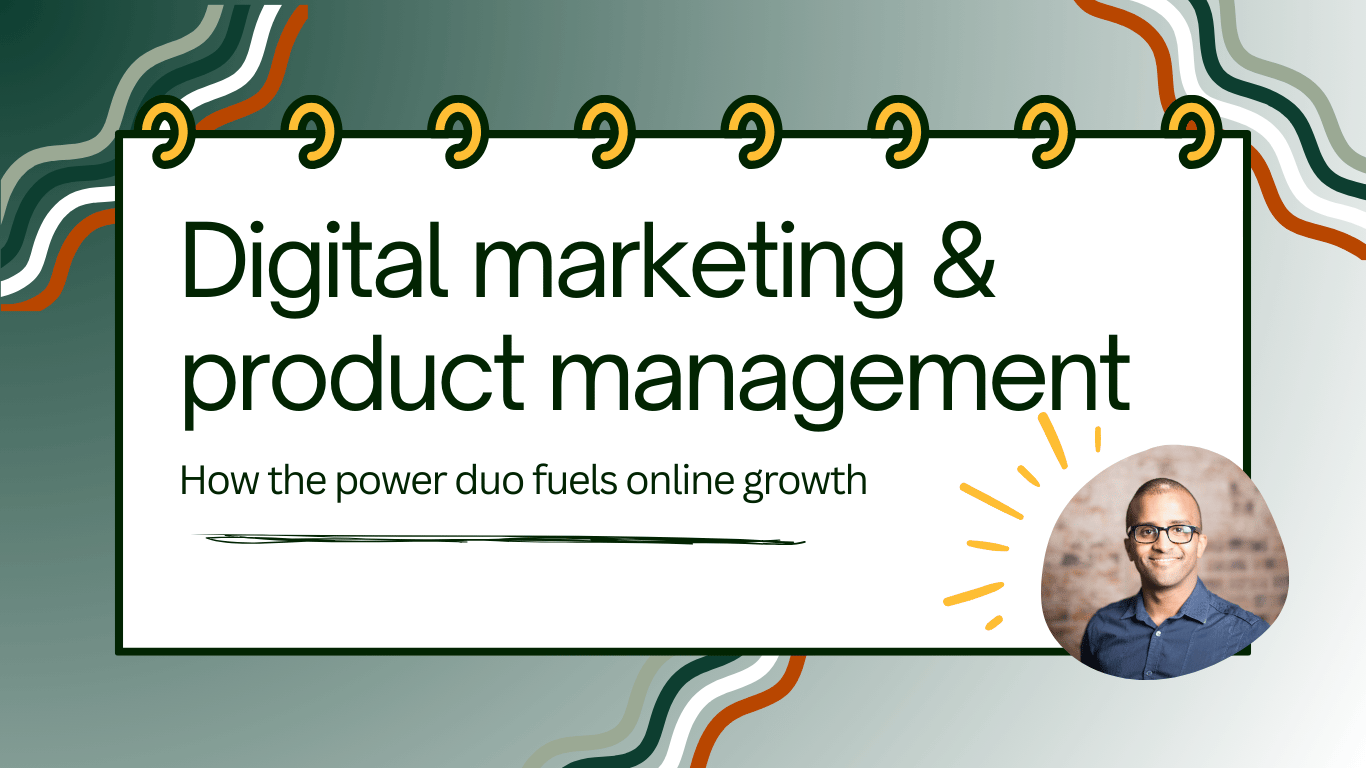Digital marketing & product management: How the power duo fuels online growth
Product Managers and Digital Marketers are very different skill sets but can work together in a powerful way. Here is how they can complement each other.

I've long been fascinated by product management and worked with many of them throughout my career while working in digital marketing. So I thought of putting this article together to present a better understanding of how they overlap and complement brilliantly together, to then fuel a company's growth.
Before I get any hate, I'm not saying they are the most important aspects of a company. I'm not neglecting other departments and skill sets. I have experience with both in some shape or form and there's something about these two that is powerful together.
I'll discuss other departments another time.
Below is how PMs (product management/manager) and DMs (digital marketing/marketer...so nothing to do with sliding into someone's inbox) complement each other beautifully yet powerfully.
Using customer insights to create the perfect product

Digital marketers and product managers are very similar to detectives with magnifying glasses in the sense that they look for clues but from their own unique perspectives.
For example, product managers can provide digital marketers with valuable insights into customer preferences and pain points. These insights can then be used to develop targeted marketing campaigns.
On the other hand, digital marketers can gather data on customer behaviour and engagement through marketing efforts. This can inform product managers in optimising and enhancing the product based on customer feedback.
Together, they create a comprehensive understanding of the customer. They get a full picture of what customers really want, plan ahead and drive informed decision-making.
Like any company would do, you can regularly get customer feedback to identify their needs, create products and services that meet those needs and make them more aware of them.
Share feature-benefits, implement them, and learn from them
A PM can come up with some cool and nifty products for their customers with the help of their customers and research, so that (in theory) their customers are going to find them valuable.
DMs are better at serving those features to customers and in their language. This is key as it will allow customers to better understand that it will make their life easier, and they will get more value for their money when using the said product or service. For example, a DM can explain why a service is cheaper than its competition, and why its features are superior to the competitors'.
Complimentary and deep content knowledge

PMs tend to have a deeper understanding of products than DMs. That means they can provide those golden nuggets when describing the products in detail.
DMs can leverage that knowledge to organise, structure and distribute it across a number of channels. This will enable customers to find and engage with it.
DMs also tend to have a better understanding of SEO and what kind of content and keywords to target. But it's difficult, if not impossible, to know these details without fully understanding the product's ins and outs.
And guess who knows everything about the product? 😉
Team up for better A/B testing, experimentations and higher quality results
A/B testing is constantly experimenting with what works and what doesn't work. If DMs work alone, creating hypotheses can be challenging, and quality could be compromised. This is not the case if it's done between PMs and DMs.
For the former, they can bring their own experiment ideas, particularly because PMs tend to have direct contact with customers and really understand their pain points. As DMs (and conversion experts), they provide data and tools for testing. But they can have their own insights based on running testing that focuses on web performance and analysing web analytics.
And together, they can experiment and work out what makes users tick.
For example, the product manager may suggest testing different pricing strategies based on customer feedback where they may prefer a pay-as-you-go model instead of paying monthly or annually. Meanwhile, the marketer can propose testing different messaging and visuals to see which resonates best with the target audience. By combining their expertise and insights, they can conduct more effective experiments and achieve higher-quality results.
Work together as a "launch party committee"

When there is a product to be launched, the two parties are literally like party planners; one creates the product, the other spreads the word.
And then they can celebrate and party together.
Or not, because if it didn't work out well, it's back to the drawing board and work together on why it didn't work. Whether it was successful or not, there are always learning opportunities for both PMs and DMs.
Sharing metrics and KPIs to better understand customers
It goes without saying that PMs and DMs have their own metrics that they need to focus on. While there are some metrics that overlap, e.g.:
- Conversion Rate: how many people actually become buyers?
- Customer Acquisition Cost: how much does it cost to get one person to buy your product? Naturally, the lower the better.
- Customer Lifetime Value: how much value does a customer bring over their entire relationship with the product?
- Net Promoter Score (NPS): how satisfied are the customers and how likely are they to recommend the product?
- Churn Rate: how many customers leave you and stop paying for the product?
- User Engagement Metrics: daily active users, session duration, feature adoption, etc.
- Return on Investment: is it worth the investment (of time and money) or not?
- Traffic: can customers find the product via various acquisition channels?
But there are also specific PM metrics, like:
- Time to Market: how fast can they go from idea to launch?
- Feature Adoption Rate: how many users are embracing new features?
- Sprint Burn-down: how efficiently is the PM team clearing their to-do list during a sprint?
- Product Usage Index: which parts and features are the most popular?
For DMs, they could be:
- Click-Through Rate (CTR): how many people click on social media ads and page titles on search engines?
- Cost Per Click (CPC): how much does it cost to click on an ad?
- Engagement rate: this could be the engagement rate of the website and app (like time on page, clicks to next page) or social media platforms (likes, shares, posts, etc.)
- Email Open Rate: how many people are actually opening the emails/newsletters that are sent to them?
- Keywords ranking: how high are the products or specific content ranking on search result page?
To think, this is not a complete list. But just by going through the above alone, PMs and DMs have a lot of data to share together.
Identify opportunities for upselling
All business owners would like their customers to upgrade and/or try the new products. How do you respectfully do that without forcing them?
Well, with the help of the data both PMs and DMs have from above, they can work together on this. PMs can help gain further insights into what customers are saying and looking for. DMs can look at the user journey and work out how to seamlessly blend it in without interrupting the user experience.
And what better way than to, not just get the PMs to talk to the customers directly, but the DMs can also work on organising A/B tests on what's the most effective upselling formula to implement.
One example of this is when a product manager analyses feature adoption rate data to identify which features are most appealing to customers. With a marketer, they can then collaborate to create targeted campaigns that highlight these features and offer incentives for upgrading to a higher software package that includes those features, such as exclusive access or discounted pricing. By combining their insights and expertise, they can develop a persuasive strategy that encourages customers to upgrade while ensuring a seamless user experience.
And you can do that by getting feedback, analysing data, doing some A/B testing...
...and now I'm going round in circles, so you can see where I'm getting at.
Organisations (sometimes unknowingly) prevent two roles from working together.
Personally, I think that's a big mistake. Product Managers and Digital Marketers are seriously powerful, collectively and individually. It would be foolish for anyone to keep them separate, and if that does happen, the only thing that will suffer from this are your customers...
...and then eventually, the company.
Ultimately, the success of a Product Manager and Digital Marketer goes hand-in-hand with the company's success.
Have I missed anything else? Let me know below.
